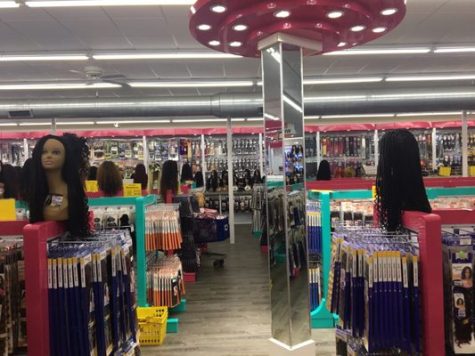Hair care access highlights inequity
One night I ran out of my hot oil treatment for my hair, and it dawned on me: since I moved from Austin Boulevard closer to the high school I’m not down the street from any beauty supply stores anymore.
It’s not like I live an hour away now, but I was used to the convenience of having beauty supplies nearby. It made me think about the other Black girls that don’t live by a beauty store.
That brought up a question: how is it that all of the beauty supply stores for Black hair are near Austin and not spread throughout Oak Park? There are only three: K-Stone Beauty Supply at 20 W. Madison St., Oak Park Beauty at 8 Lake St. and House of Melanin at 262 Chicago Ave. They are all by Austin Boulevard, which is the border of Oak Park and the West Side of Chicago.

You might say that’s because more Black people live in that area. According to Austintalks.org, a website created by Columbia College Chicago’s communications department, Austin is 84 percent black and 5 percent white, while Oak Park is 70 percent white and 22 percent Black. It also happens to have a distinctly higher crime rate than Oak Park.
After doing some research and interviews, my mindset changed. I was asking how, when I should have been asking why. Why is Austin mostly Black and Oak Park mostly white?
It’s because America has a long history of systemic racism, according to “A Forgotten History of How the U.S Government Segregated America,” a 2017 article posted on National Public Radio’s website. The article featured a book called “The Color of Law” by Richard Rothstein.
Rothstein wrote about how starting in the 1930s the federal government created a plan to provide housing to white people only. Blacks and other people of color were left out of this plan and pushed into the urban housing projects. Also in 1934 the Federal Housing Administration was established, causing redlining that “furthered the segregation efforts by refusing to insure mortgages in and near African-American neighborhoods,” according to the article.
This is why a lot of Black people are in these low income communities and why the beauty supply stores are where they are.
OPRF senior Ava Cheeks, who is also a hair stylist, shared her opinion about how systemic racism still plays a part in the placement of beauty supply stores.
“So it’s definitely towards racism because (some people are) scared of going to the beauty supply,” she said. “I remember one time my friend’s mom, who is white, was scared to go to the beauty supply store because of where it was located.”
The pride Black people have for our hair is very important. It can be hard for other people to understand. As math teacher Ms. Gardner explained, “They can get all of their products from Walgreens, Walmart, whatever, but we can’t.”
Beauty supply stores hold everything Black people need from braiding hair, curling gel, durags, detangling brushes, lashes, wigs and many more. In the regular stores our options are more limited, unlike for others.
OPRF senior Trinity Brown expressed how Black hair is important to us, saying, “Black people’s hair is very time maintenance. We have different curl patterns, textures and it is harder to take care of. But it shapes your style and makes you you.”
Now that we know the how and why, we need to focus on the what. What can we do to lessen this problem? What can others do to educate themselves about systemic racism and how it affects people of color’s everyday lives? It won’t be easy finding the what, but like Fredrick Douglass said, “If there is no struggle, there is no progress.”


